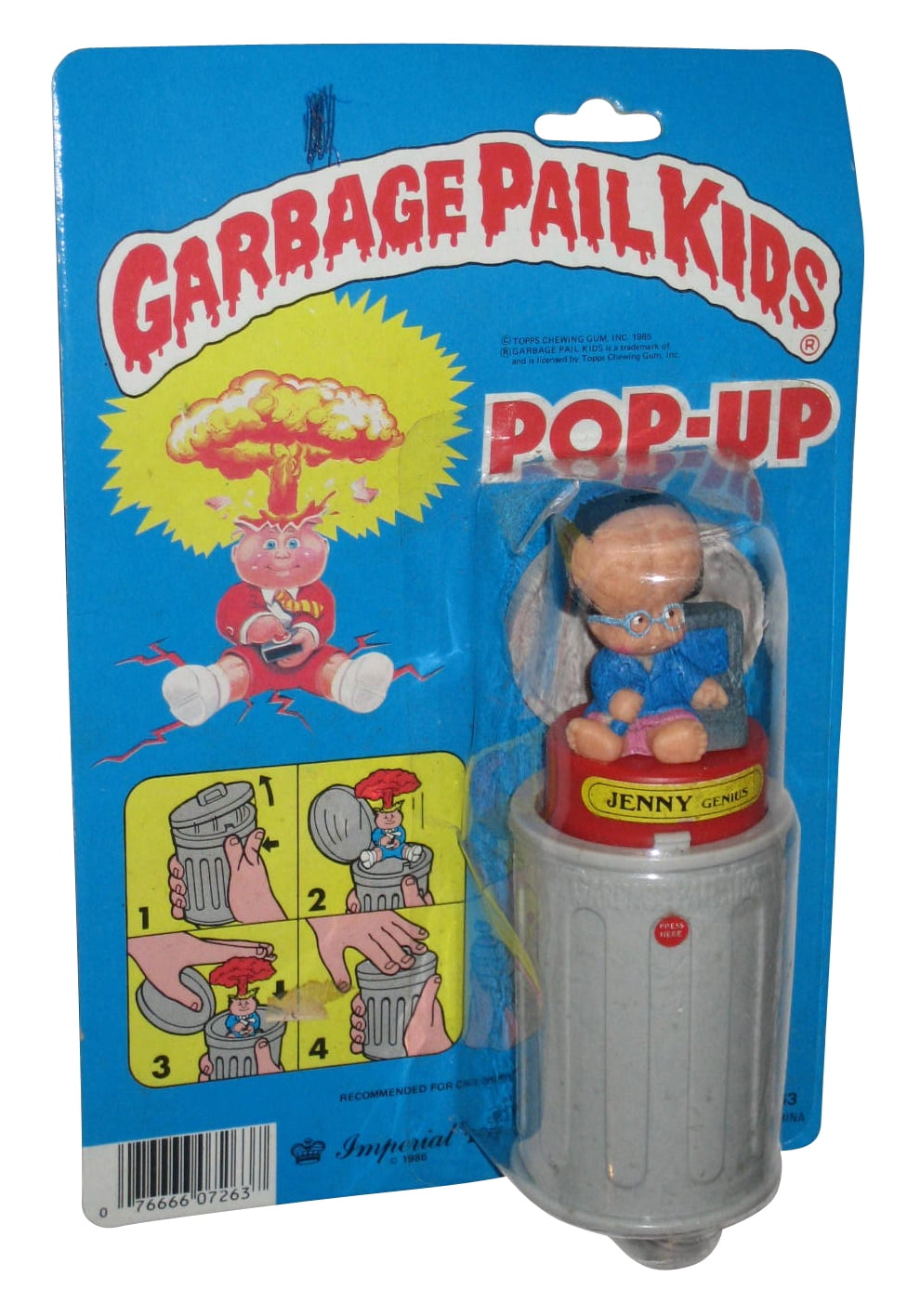

Fifteen different series of Garbage Pail Kids were produced between 19. The care with which these outlandish cards were created was appreciated by consumers. And I tried to put love into the paintings.” “On my end, despite the abundant gross humor and shock value, I simply wanted the art to feel good to look at. Looking back over three decades later, Pound sees several reasons why Garbage Pail Kids have endured:Īlthough he freely admits that “I wasn’t expecting it, but Garbage Pail Kids became a huge hit,” Pound says aesthetic concerns were foremost on his mind when painting these garish figures. Working with Spiegelman, Newgarden, and Topps creative favorite Jay Lynch to craft ideas, Pound’s early characters included the now iconic Adam Bomb, and remain some of the most beloved in the line (for the record, Pound names Adam Bomb, Up Chuck, Jolly Roger, and Mona Loser as some of his favorite creations). “They liked the idea sketches I sent in,” he says, “and asked me to do all 40 paintings in two months, which was faster than I was used to, but I got organized and made the deadline.” Though this Wacky Pack was shelved, Pound single-handedly painted all the characters featured in the first Garbage Pail Kids set. Pound, a veteran of painting fantasy and science fiction book covers, was brought by Spiegelman to illustrate the original Wacky Packages “Garbage Pail Kid” card (featuring one of the dolls pushed into a trash can and touting orders to send the unfortunate soul to the Department of Sanitation). Spearheading the project was underground comics legend Art Spiegelman (who would go on to win a Pulitzer Prize in 1992 for his groundbreaking holocaust graphic novel Maus), Raw comics anthology contributor Mark Newgarden, and artist John Pound. But the decision was wisely made by Topps execs that Garbage Pail Kids could be a card line of their own.
#GARBAGE PAIL KIDS PATCH#
Naturally, then, Cabbage Patch Kids were an ideal target to get the Wacky Packages treatment. These dolls from Xavier Roberts and Coleco featured an elaborate backstory and cloyingly adorable looks that became the stuff of toy legend (news reports featuring near riots as parents tried to get their hands on the damn things were commonplace in the early 1980s). In the early 1980s there was no bigger consumer frenzy than the Cabbage Patch Kids. Like Mad Magazine before them, these stickers showcased parodies of contemporary products with bitingly accurate focus. Further expanding their creative pallet, Topps released numerous humor card lines, the most popular of which was Wacky Packages.
#GARBAGE PAIL KIDS TV#
Although they were best known for their baseball cards, the Topps Company also had huge success with bubblegum cards based on popular films and TV shows. To trace the origins of Garbage Pail Kids, a brief history lesson is in order. After 35 years, Garbage Pail Kids have become a cultural institution-not to mention schoolyard contraband for nearly four decades, an unexpected bonus that would make the creators of these cards-veterans of the counterculture themselves-beam with pride.

Often grotesque and always eye-catching, the unfortunate children showcased on these cards fostered an interest in painting, illustration, and design for generations of kids since Topps first introduced them back in 1985 (their pun-heavy names also were a gateway for subversive humor). Years later, I came to realize that this demonstration was all about jealousy – these cards had instantly engaged students in art in a way that her years of teaching never could.Īnd let me be clear here: Garbage Pail Kids are most definitely art.

“This junk has no place in an art room,” she stoically declared as Andy was transformed into sad confetti before my eyes. I was in fifth grade waiting for art class to start and showing off my prized Ashcan Andy to enraptured classmates when my teacher walked in the classroom, sighed, confiscated the card and proceeded to rip it up. Garbage Pail Kids gave birth to my anti-authority streak. This story appears in the Den of Geek x eBay special edition trading card magazine.


 0 kommentar(er)
0 kommentar(er)
